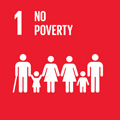- Docente: Maria Laura Bolognesi
- Credits: 10
- SSD: CHIM/08
- Language: Italian
- Teaching Mode: Traditional lectures
- Campus: Bologna
- Corso: Single cycle degree programme (LMCU) in Pharmaceutical Chemistry and Technology (cod. 5986)
-
from Oct 03, 2025 to Jan 09, 2026
Learning outcomes
At the end of the course the student knows: - the basic concepts of general medicinal chemistry concerning drug-target molecular interactions, pharmacokinetics and drug discovery; - the fundamental aspects concerning the design, the synthesis, the mechanisms of action at the molecular level and the structure-activity relationships of some classes of drugs attributable to anti-infectious and anticancer chemotherapeutics, anti-inflammatories and drugs active on the hormonal systems of steroids. In addition, the student: - is able to understand the mechanisms of action of enzyme inhibitors and steroid drugs based on the chemical characteristics of the molecules involved and knows how to analyze their structure-activity relationships; - is able to critically evaluate synthetic strategies for the preparation of new drugs belonging to these classes; - has the ability to critically bring together medicinal chemistry texts and articles on the subject.
Course contents
GENERAL PART
Definition of medicinal chemistry. Process of action of drugs. Molecular targets of drugs. Interaction between a drug and a molecular target: bonds involved in the interaction. Stereochemistry and drug action: optical, geometrical and conformational isomerism. Pharmacokinetic phase: absorption, distribution, elimination; metabolism: phase I and phase II reactions.
DESCRIPTIVE PART
Drugs acting on the biosynthesis of the cell wall: beta-lactam antibiotics; peptide antibiotics; isoniazide, ethambutol.
Drugs acting on the function and biosynthesis of components of the cell membrane: peptide antibiotics; macrolide-polyene antibiotics; azoles, allylamines.
Drugs acting on the protein biosynthesis: tetracyclines; aminoglycosides; macrolide antibiotics; ansamycins.
Drugs acting on the DNA biosynthesis: sulfonamides; diamino-pyrimidines, -triazines and analogues; purines, pyrimidines and analogues.
Drugs acting on DNA: nitrogen mustards, nitrosoureas, ethyleneimines, mitomycins, platinum derivatives; pentamidine, distamycin and analogues; actinomycins, quinolines, acridines; anthracyclines and derivatives; quinolones.
Drugs acting on mitosis: Vinca alkaloids; taxol derivatives.
Drugs acting on intracellular signaling: kinase inhibitors.
Drugs acting on the eicosanoids system: nimesulide, coxibs; salycilic and anthranylic acid derivatives; acetic and propionic acid derivatives; pyrazolidindiones; benzothiazines; pyrazolinones; acetanilides.
Drugs acting on the steroid hormones system: estrogens; androgens; progestins; glucocorticoids; mineralocorticoids.
INTRODUCTION TO COMPUTATIONAL DRUG DESIGN
Methods based on 3D models of molecules (ligand-based and target-based approaches; virtual screening). Data-based methods (QSAR, machine learning, network-based).
Readings/Bibliography
For further readings, please refer to:
A. GASCO, F. GUALTIERI, C. MELCHIORRE, Chimica Farmaceutica, CEA, Milano, 2019
G.L. PATRICK, Chimica Farmaceutica, III Edizione italiana, EdiSES, Napoli, 2015.
D.A. WILLIAMS, T.L. LEMKE, Foye's Principi di Chimica Farmaceutica, VI Edizione italiana, Piccin, Padova, 2014.
Teaching methods
Lectures
Assessment methods
The learning assessment consists of both written and oral components. Its purpose is to evaluate the student's understanding of:
a) the fundamental concepts of medicinal chemistry, and
b) the key aspects related to the design, synthesis, molecular mechanisms of action, and structure–activity relationships of the drug classes covered during the course.
As a preliminary step, the student will be required to write about the synthesis of two drugs selected from those listed in the course syllabus. Upon successful completion of this written test, the student may proceed to the oral examination, which will focus on topics outlined in points a) and b).
The written and oral components may be taken on separate exam dates ONLY within the same examination session.
Teaching tools
The teaching material (slides) presented during classes is available on the Virtuale platform.
Office hours
See the website of Maria Laura Bolognesi
SDGs




This teaching activity contributes to the achievement of the Sustainable Development Goals of the UN 2030 Agenda.
